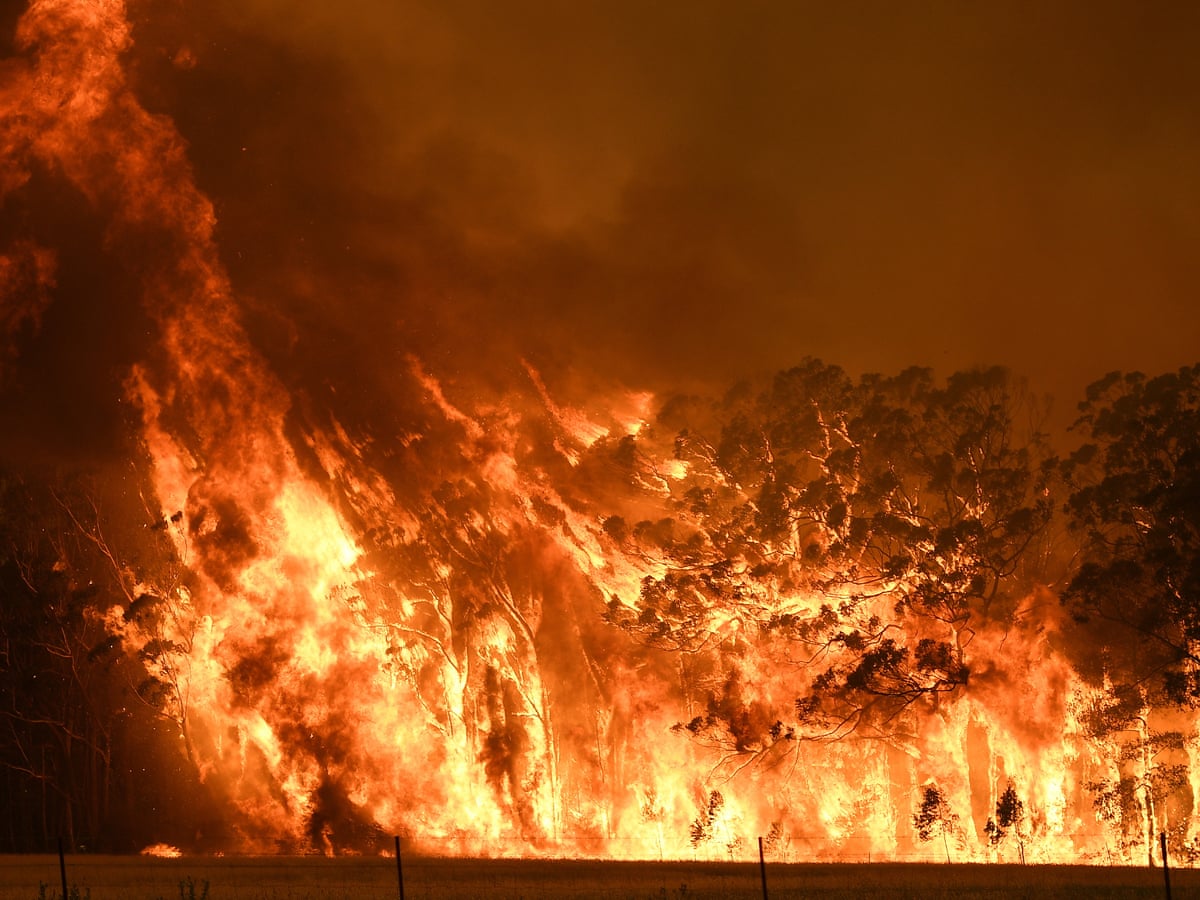The Relevance of Bushfire Administration in Fire Protection
In the realm of fire security, the relevance of reliable bushfire administration can not be understated. As areas worldwide face boosting circumstances of wildfires, the proactive method to stop and alleviating these all-natural catastrophes via critical bushfire administration approaches has actually arised as a crucial element. Beyond the instant threat to human life and residential or commercial property, the interplay between bushfire administration and eco-friendly preservation, community participation, and climate modification presents complex obstacles that demand detailed solutions.
Relevance of Proactive Bushfire Avoidance
Proactive bushfire prevention approaches are vital in alleviating the ruining effects of wildfires on ecological communities and areas. One crucial element of aggressive bushfire prevention is fuel administration.
Educating the public on fire security techniques and advertising area understanding about the relevance of bushfire avoidance are essential elements of proactive approaches. Eventually, positive bushfire prevention plays a considerable duty in guarding communities and ecosystems from the devastating impacts of wildfires.
Role of Neighborhood Involvement in Fire Security
Involving the neighborhood in fire security initiatives is integral to enhancing the efficiency of positive bushfire prevention methods. Community engagement plays an essential duty in cultivating a cumulative understanding of the dangers posed by bushfires and the importance of preparedness steps. By including local homeowners, authorities can share essential details on fire safety and security methods, discharge procedures, and very early warning systems, encouraging people to take positive steps to protect their buildings and lives.
Furthermore, area engagement campaigns assist develop resilience within neighborhoods, cultivating a sense of unity and shared duty in mitigating fire dangers. With workshops, training sessions, and community occasions, residents can find out how to develop defensible rooms around their homes, reduce fire gas tons, and identify potential risks. By cultivating a society of preparedness and partnership, neighborhoods can reinforce their capability to react efficiently to bushfire emergency situations, minimizing the effect on residential or commercial properties and lives. Inevitably, area engagement is a foundation of thorough fire security approaches, stressing the importance of collective activity in securing at risk areas from the danger of bushfires.
Value of Wildlife Preservation in Bushfire Administration
Preservation of wild animals plays an essential role in effective bushfire monitoring approaches, making certain the security of diverse ecological communities and biodiversity in fire-prone areas. Wild animals conservation is essential as it contributes to the total strength of ecological communities, assisting in their capability to withstand and recoup from the effect of bushfires. By preserving habitats and protecting different species, the natural equilibrium within these ecological communities is maintained, which is vital for their lasting health and wellness and sustainability.
Furthermore, wild animals preservation also aids in minimizing the danger and intensity of bushfires. Healthy environments with well-preserved wildlife populations can work as natural firebreaks, decreasing the spread of fires and restricting their harmful potential (BAL Report). Specific animal species, like tunneling pets or birds that spread seeds, play one-of-a-kind functions in stopping fires or helping in the post-fire regeneration of environments
Including wild animals conservation into bushfire administration techniques is not only important for protecting biodiversity however additionally for advertising the general wellness and strength of ecosystems when faced with enhancing fire risks.
Benefits of Strategic Gas Decrease Programs
Strategically implementing fuel reduction programs is essential in reducing the danger and influence of bushfires in fire-prone regions. These programs include regulated burning, mechanical clearing up, and other methods to reduce the quantity of combustible vegetation available useful reference to fuel wildfires. By strategically minimizing fuel loads in key locations, such as close to residential areas or essential facilities, the strength and spread of bushfires can be substantially decreased.
Among the primary benefits of fuel official source decrease programs is the enhancement of total fire resilience in a community. By developing calculated gas breaks and minimizing the connection of greenery, these programs assist to disrupt the path of a bushfire, making it easier for firemans to snuff out the blaze and include. Additionally, fuel reduction programs can shield biodiversity by stopping exceedingly intense fires that can ravage habitats and threaten wildlife populaces.
Furthermore, these programs can likewise safeguard human lives and home by decreasing the threat of tragic fires that position a substantial danger to neighborhoods. Eventually, strategic fuel decrease programs play an important role in proactive bushfire monitoring and cultivating a safer environment for both individuals and nature.
Impact of Climate Modification on Bushfire Danger

Higher temperatures cause drier plants, making it more prone to ignition. Minimized rainfall in particular areas lengthens dry spell conditions, better enhancing the flammability of the landscape. In addition, the changing climate has modified wind patterns and weather, resulting in even more irregular fire behavior and fast fire spread.
As the environment continues to change, the regularity and strength of bushfires are anticipated to climb, requiring a adaptive and positive technique to bushfire monitoring. Techniques have to evolve to account for the changing risk landscape, integrating environment estimates and considering long-lasting durability in fire administration preparation. Addressing the effect of climate adjustment on Website bushfire danger is critical in developing effective strategies to protect lives, home, and the atmosphere.
Final Thought
Finally, positive bushfire prevention, community interaction, wild animals preservation, tactical fuel decrease programs, and factor to consider of environment adjustment are critical parts in effective fire security. By executing these approaches, we can much better take care of bushfire dangers and safeguard both human lives and the environment. BAL Assessment. It is crucial that stakeholders function together to focus on these actions to lessen the destructive impact of bushfires on ecological communities and neighborhoods

As the climate continues to change, the regularity and strength of bushfires are anticipated to increase, necessitating a adaptive and proactive approach to bushfire monitoring.In verdict, aggressive bushfire prevention, area involvement, wild animals preservation, calculated gas decrease programs, and factor to consider of environment modification are critical parts in reliable fire security.